Using a simple model based on granular physics, like those used for modeling sand or sugar deposits, scientists have recreated the diamond shape of asteroids Ryugu and Bennu in computer simulations. Plus, the origins of loner dwarf galaxies and this week’s What’s Up.
Podcast
Transcript
Hello and welcome to the Daily Space. I am your host Beth Johnson, and I am here to put science in your brain.
When we think of observing asteroids, the first things that come to mind, for me at least, are telescopic observations of small moving dots in the sky and space missions taking the iconic images we have seen of objects like Bennu, Itokowa, and Ida with its little moon Dactyl. It’s easy to forget that powerful radar facilities are able to obtain cool 3D shape models of passing space rocks.
Since 1968, NASA’s Deep Space Network has used the Goldstone facility to both communicate with distant spacecraft and to radar image nearby asteroids. We are lucky that small asteroids don’t get super close to Earth all that frequently, and large asteroids very rarely get anywhere near us. This means that it can be days between targets, and it has taken 53 years for Goldstone to rack up its thousandth rock.
That thousandth rock, currently designated 2021 PJ1, was observed on August 14. It was just 65-100 feet wide and passed at a distance of over one million miles, or more than four lunar distances away. Such a small rock at such a large distance didn’t allow for particularly interesting radar returns to be acquired, so we are actually showing you the August 22 radar returns of asteroid 2016 AJ193, which was twice far away but also a whopping forty times larger. This sequence shows how radar can be used to see both the shape of asteroids and to also capture their spin rates.
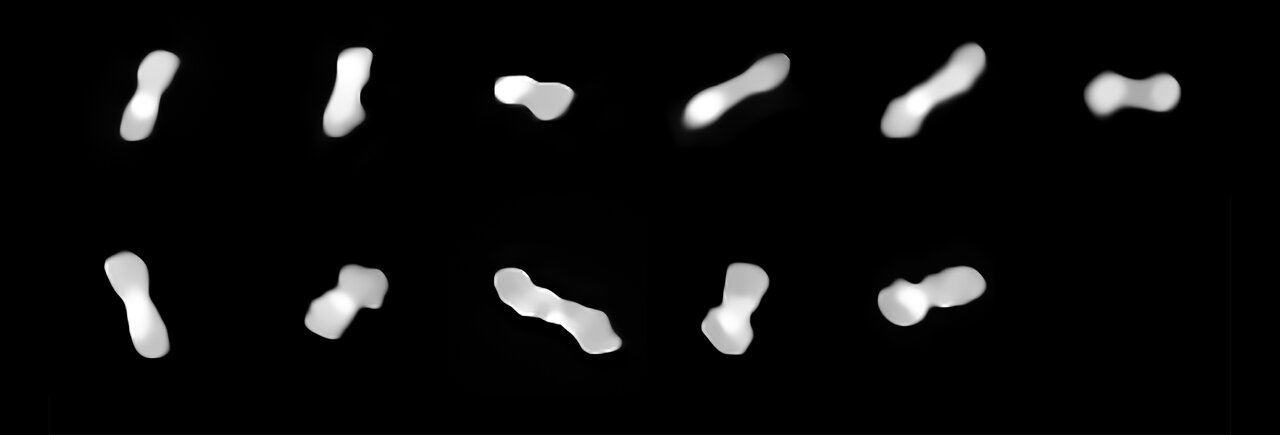
The power of radar is really hard to understand until you compare the best images we have of an asteroid. The asteroid 216 Kleopatra is a 217-kilometer across dogbone of an asteroid that regularly gets fairly close to Earth. Between 2017 and 2019, astronomer Franck Marchis used the world’s best ground-based imaging system, the Very Large Telescope (VLT) in Chile, to observe Kleopatra as it passed, and the images we got back look a bit like an unusual biological experiment. While low on the “Glamour Shot” beauty scale, these images allowed researchers to create more detailed shape models of the asteroid than were possible with earlier radar data, and they also allowed the orbits of Kleopatra’s two moons, AlexHelios and CleoSelene, to be better determined.
This science is awesome, and for full disclosure, Franck and I work together on a lot of projects like the Grudge Report YouTube series. I just need to show you the radar images of Kleo because it’s from the radar images that you can get a real appreciation of the dogbone nature of this asteroid.
See that? Dogbone! (You can see the images in our show notes at DailySpace.org.)
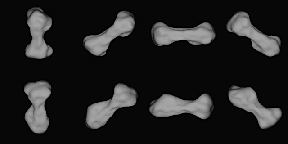
Observed with the Arecibo Radio Telescope and radar system, these images were released in a paper in 2000. The combination of these original radar images and the new VLT images allows us to understand that like Ryugu and Bennu, Kleopatra is likely a rubble pile asteroid. Its density is half that of iron, but it’s thought to be metallic in composition! This implies that there is a lot of empty space in there. What’s more, it is rotating so fast that it is just barely balanced between gravity holding it together and the spin trying to tear it apart. These latest observations lead researchers to believe Kleo’s two moons may be the result of impacts knocking things off Kleopatra but not knocking things off hard enough that they escaped the asteroid’s gravity.
While no spacecraft is slated to visit Kleo in the immediate future, this curiously shaped asteroid is something I hope we’ll one day be able to visit and explore in detail.
In looking at Kleopatra, we’re seeing a rock that was shattered and reshaped through a collision. It turns out, rocky things aren’t the only things that suffer when forced to interact with others.
There is a special kind of galaxy, the ultra-diffuse galaxies, that are rare, hard to find, and appear to simply be groups of stars like those normally found in dwarf galaxies but spread over an unusually large volume of space. In a new paper, led by Jose Benavides and appearing in Nature, researchers use computer models to piece together how these systems might form. It appears that they are literally dwarf galaxies that passed through the dark matter halos of galaxy clusters, and in the process, got spread out and lost the stuff needed to form new stars. According to the models, this only happens to systems with the kind of angular momentum or speed to fling them into the voids outside of the cluster, so if you want to find ultra-diffuse galaxies, look into the empty places where, thanks to dark matter, they are left to die.
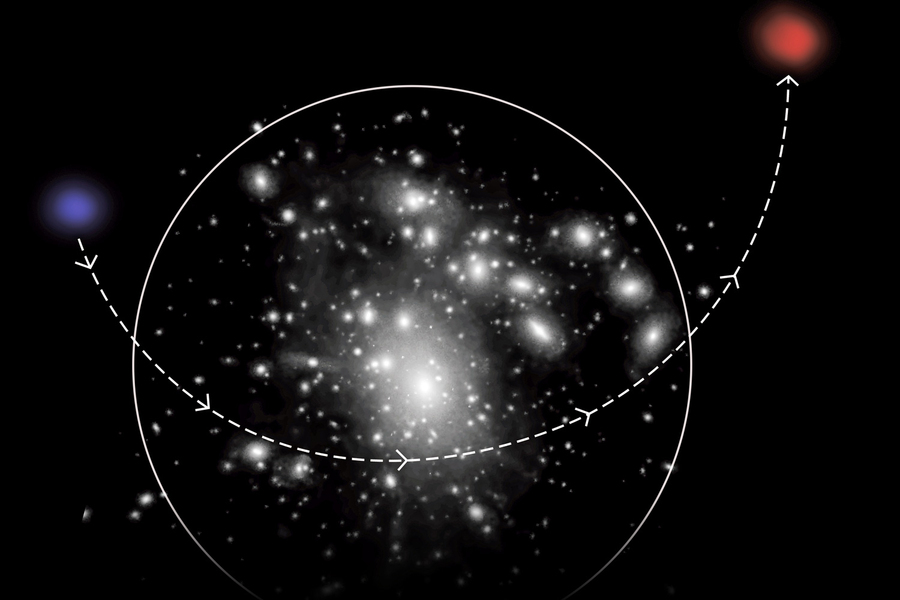
Space isn’t kind, y’all. But it does create wonderfully weird things to explore.
Astronomers and planetary scientists are guilty of constantly anthropomorphizing space objects and giving in to the temptation to see familiar shapes in the stars. The way we steal the language of what it means to be alive can sometimes get a bit disturbing though. We talk about stars as being alive when they have nuclear reactions going on in their cores, and we call them dead when they don’t have nuclear reactions in their cores.
For about a hundred years, we’ve referred to white dwarfs as dead stars. These moon-sized objects are the leftover cores of Sun-like stars that have run out of fuel for their core’s nuclear reactions.
The thing is that new Hubble Space Telescope images seem to show undead white dwarf stars with nuclear burning on their surfaces. This was discovered while astronomers were looking at the evolution of stars in the globular clusters M3 and M13. Remarkably, 70% of the white dwarfs in M13 appeared to be hotter than they should be, and this difference in temperature was consistent with the stars holding on to some residual hydrogen on their surfaces, where their extreme gravity allowed that hydrogen to undergo nuclear burning, and thus heat up the star. Why is this happening? We can’t actually tell what theories the scientists had because the article is hidden behind a paywall, but the why isn’t actually the important part here.
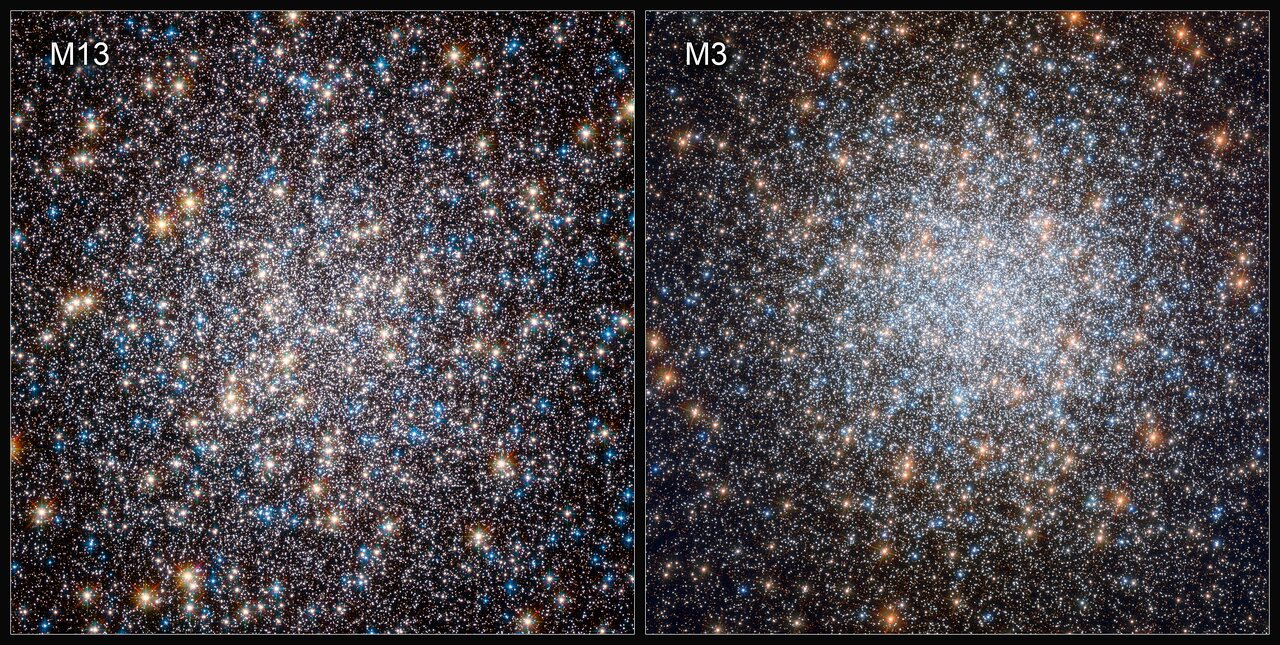
The important part is this nuclear burning means our understanding of how white dwarfs cool is only right some of the time, and that means we could be completely misjudging the ages of a variety of objects in the galaxy.
White dwarfs were thought to form at a specific temperature and spend the rest of eternity slowly cooling in ways that can be understood thanks to standard thermodynamics. The physics is something a first- or second-year graduate student can do as a homework assignment, and for those white dwarfs, when you measure their temperatures you can calculate their age. Easy peasy if you’re a physics or astronomy grad student at least. If some fraction of white dwarfs aren’t completely dead, but are instead only mostly dead and are actually burning some hydrogen on the surface, those cooling rates don’t work. And when we try and calculate their age, they will appear to be far hotter – and thus younger – than they would be without that burning.
This is a new frustration for astronomers. There are literally undead white dwarfs out there mucking up their age estimations.
Pamela is going to work on getting us this paper and hopes to be writing an epilogue to this story for our website that will explain if these stars are thought to be re-animated or simply not quite dead yet. Keep an eye out on DailySpace.org.
In our never-ending quest to understand the universe, and especially our own solar system, sometimes you have to go back to the same well over and over. We’ve already talked about several asteroids today and how difficult they can be to image. That’s particularly concerning when they are near-Earth asteroids, so we keep sending missions to asteroids to understand their composition and their history. All the information we gather can lead to not only learning more about the history of our solar system but also what kind of threat some of these asteroids present for our humble blue dot.
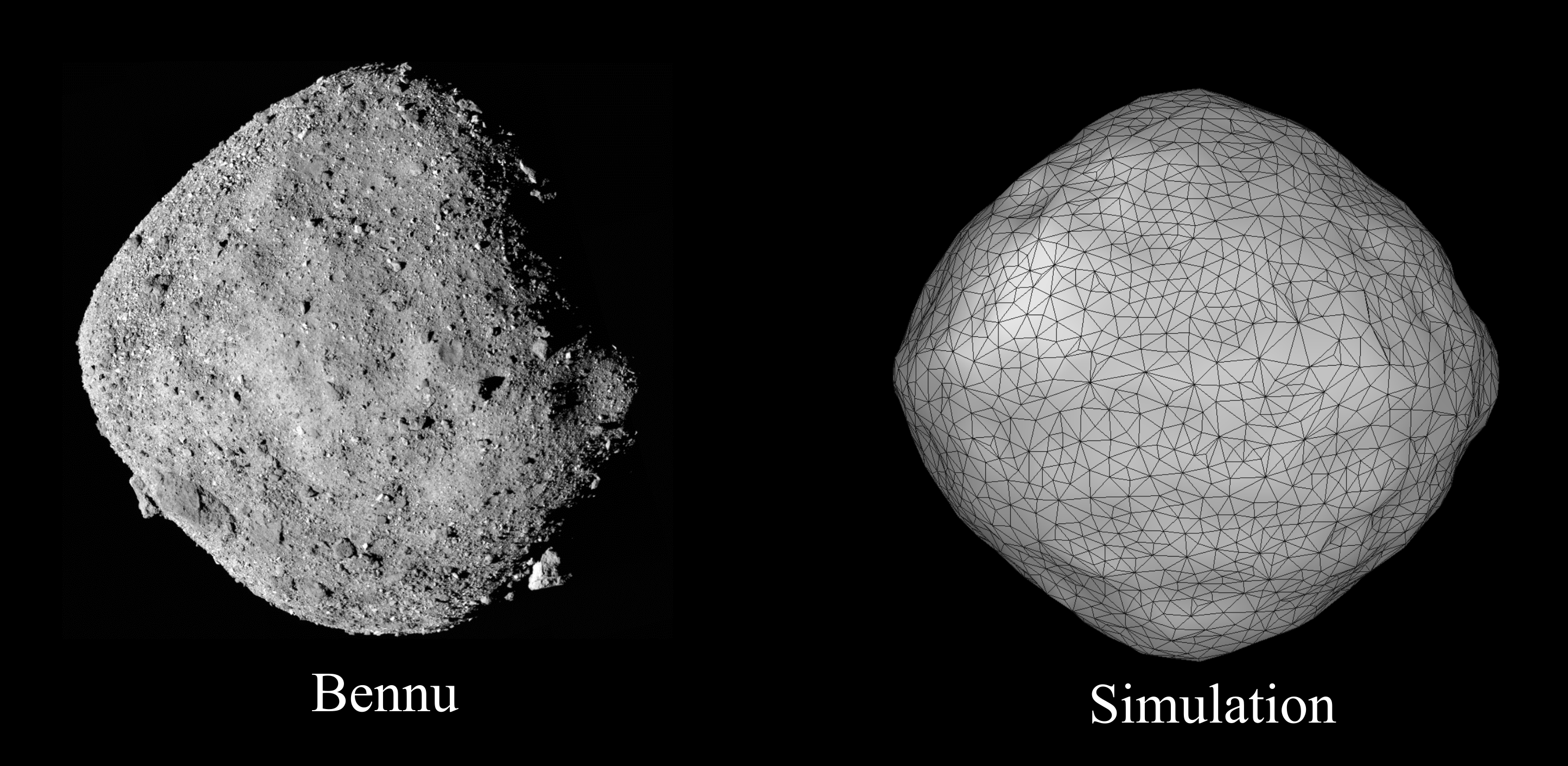
This brings me to two of our favorite asteroids – Bennu and Ryugu. Bennu, of course, was visited and sampled by the OSIRIS-REx mission after our own dedicated team of volunteers mapped thousands of images and millions of rocks, boulders, and craters to help find a relatively safe place to sample. That sample will be here on Earth in 2023.
Ryugu was visited and sampled by JAXA’s Hyabusa2 spacecraft, and the sample from that mission is already here on Earth and being studied by scientists as we speak.
But sample return missions aren’t the only things these two asteroids have in common. They are also diamond-shaped, rubble pile asteroids. They are made of bits of rock and dust that have managed to clump together without a whole lot of compression or gravity. In fact, OSIRIS-REx principal investigator Dante Lauretta called Bennu a “ball pit”. The samples taken of both asteroids were much larger than expected, and OSIRIS-REx’s sample arm dove almost a half meter into Bennu itself.
How did these asteroids come to have their distinct diamond shapes, though? This question has been an interesting area of research for planetary scientists. Clearly, they don’t have enough gravity to become spherical. They’re not big enough. Now, thanks to a team of scientists from the Okinawa Institute of Science and Technology (OIST) and Rutgers University, we may have found the answer, and it turned out to involve simple physics. (If physics can ever be called “simple”. I personally refer to it as making simple things complicated.)
The previous hypothesis on how asteroids become diamond-shaped involved the spin of the asteroid pushing material up and down to the poles; however, simulations never matched reality. Instead, the modeled asteroids ended up flattened and asymmetrical. Lead author Dr. Tapan Sabuwala explains: We found that these models were missing a key ingredient, the deposition of material. And a simple granular physics model, normally used for the deposition of grains like sand or sugar, could predict the observed shape.
The press release includes this fabulous description: Imagine pouring sand or sugar through a funnel. A cocktail of different forces will ensure that it forms a conical pile (like a party hat).
Add in the gravity orientation of the asteroids, which is not that of a sandpile, as well as the rotation, and voila. The simulated asteroid had a diamond shape. Basically, the centrifugal force, that which holds everything together really, is caused by the rotation but decreases at the poles, so all the bits of rock and dust pile up there. Plus, these asteroids had to have gotten their diamond shape early on — they aren’t deformed spheres, either.
Sometimes, you have to take your science back to basics and maybe think outside the prevalent hypotheses to find your answers. Almost makes me love Bennu a little bit more for being strange right from the start. Almost.
What’s Up
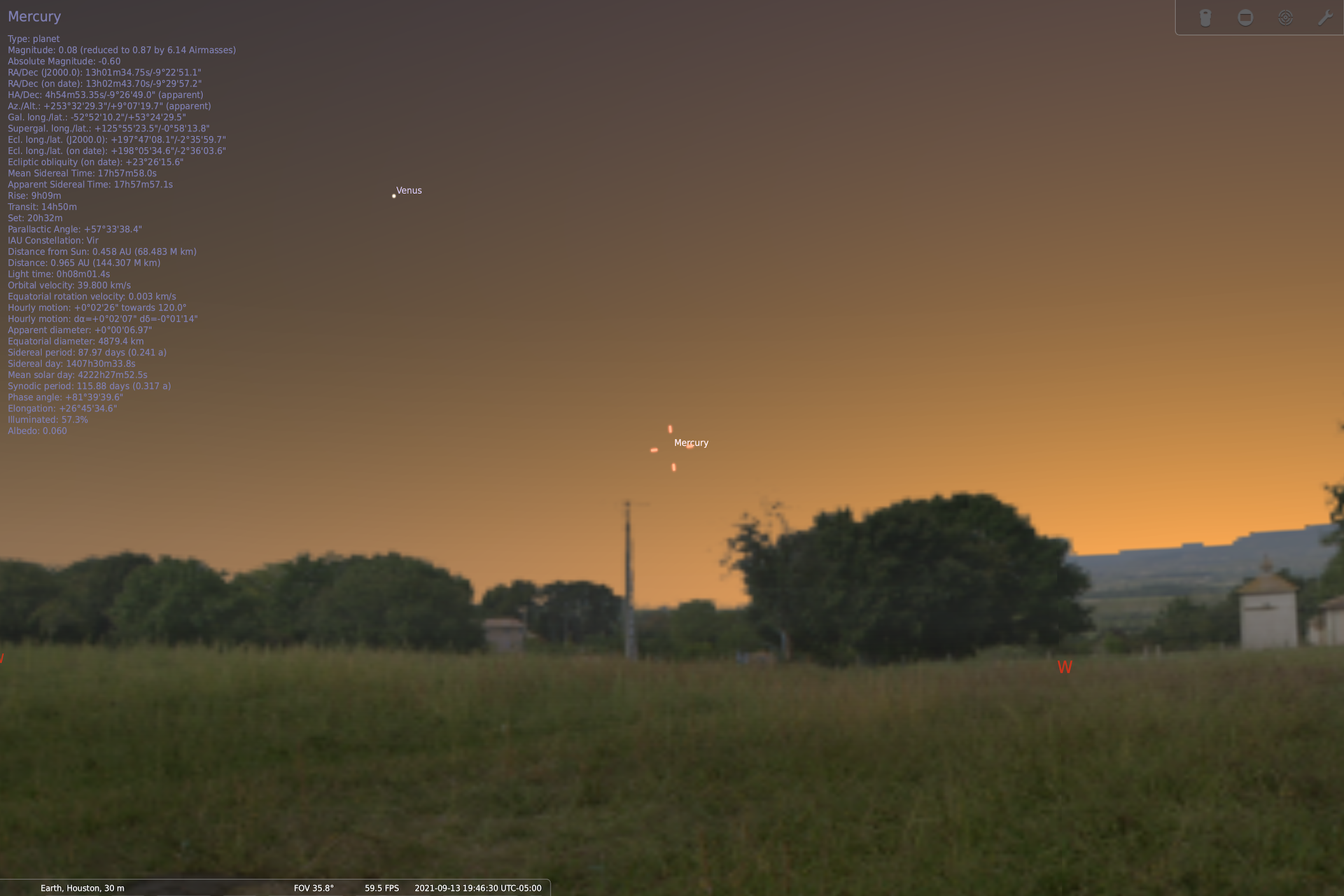
This week on What’s Up is the greatest eastern elongation of Mercury. What that means is that Mercury will appear as far from the Sun in the sky as it ever gets when viewed from Earth. This is an important event for astronomers who want to observe the innermost planet as its close proximity to the Sun makes it difficult to see it in the Sun’s glare. In absolute terms, Mercury will reach almost 27 degrees away from the Sun, or about three fists away if you hold your hand out in front of you.
Mercury will be visible after sunset in the western sky for about an hour on September 13, this coming Monday. Just as the sun sets, look west, three fists up, and a little down. Yes, that’s confusing, but we have maps on our website, Daily Space.org, to help you out.
Although Mercury is often in the sky, it’s typically not visible from the Earth because of the Sun’s glare. However, the farther away from the Sun that Mercury gets, from the Earth’s point of view, the easier and safer it is to view. As a general rule, do not look directly at the Sun and especially please don’t look at it with any optics, such as binoculars or a telescope, that are not properly fitted with a solar filter.
This coming week, Mercury will be bright, magnitude 0.1, which is brighter than almost all the stars, and will be visible even from an urban environment. Although Mercury will be visible to the unaided eye, binoculars will provide a better view and will even show the phase of the planet. Yes planets, like the moon, have apparent phases! Mercury will appear partially dark like the Moon when it’s a few days away from being full. At eastern elongation, Mercury will take on a waxing gibbous phase, and then get more and more full each day until it’s a completely illuminated disc.
Mercury is hard to see for another reason, the apparent line all planets trace, the ecliptic. This is an imaginary plane drawn out into space from the Earth’s equator, and all of the planets in the solar system appear to orbit in this plane. Mercury is no different. The angle between the ecliptic and the horizon changes depending on whether you are viewing in the morning or the evening. In the evening in the autumn, objects on the ecliptic are very low on the horizon, making them harder to view. The ecliptic is at its highest angle during an equinox, where the Sun’s light hits the Earth at a straight angle, which also explains why this particular event, in general, and Mercury in particular, is so much better observed from the southern hemisphere than up here in the northern hemisphere.
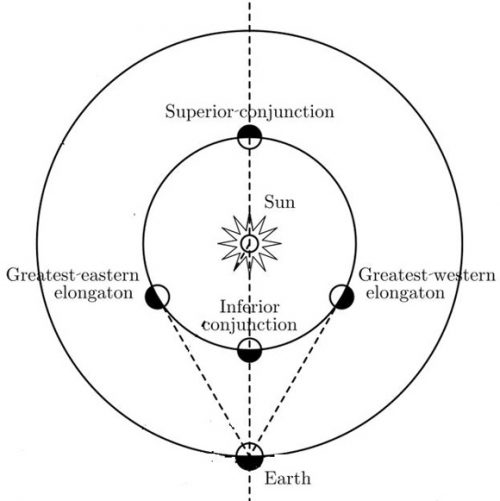
Right now, the best time to view Mercury in the northern hemisphere is its western elongation which happens in the morning starting next month and continuing into November, peaking in late October.
Mercury is a rather unusual planet. For years, planetary scientists had assumed that Mercury would be full of refractory elements – that is, stuff that doesn’t melt or boil easily. Instead, NASA’s MESSENGER mission revealed a surface with a lot of volatile elements, such as sodium. There is even evidence for water in craters near the poles of Mercury, similar to water in the permanently shadowed craters on the Moon.
Geochemists had also assumed that Mercury’s surface would be high in iron, due to the large size of Mercury’s core and its close proximity to the Sun. Instead, the surface of Mercury appears to be especially low in iron compared to what we see on other planets.
How can this be? Well, it may be because the chemistry of Mercury is especially reducing, meaning that the iron wouldn’t be incorporated into rocks as it can be on the Earth or Mars, but instead, it forms as metallic iron, sinking into the core. Whatever the case, Mercury presents a large number of apparent contradictions that planetary scientists are still working to understand.
Get out there, look up – but not too high up – enjoy Mercury, and know that it is a weird world we still don’t understand.
This has been the Daily Space.
You can find more information on all our stories, including images, at DailySpace.org. As always, we’re here thanks to the donations of people like you. If you like our content, please consider joining our Patreon at Patreon.com/CosmoQuestX.
Learn More
Goldstone Radar Images Thousandth Asteroid
- NASA JPL press release
Caught: Optical Images of Dogbone Asteroid, Kleopatra
- ESO press release
- “(216) Kleopatra, a low density critically rotating M-type asteroid,” F. Marchis et al., 2021 September 9, Astronomy & Astrophysics
Dark Matter Sometimes Spreads Out Galaxies
- MIT press release
- “Quiescent ultra-diffuse galaxies in the field originating from backsplash orbits,” José A. Benavides et al., 2021 September 6, Nature Astronomy
White Dwarfs Aren’t As Dead As We Thought
- ESA Hubble press release
- “Slowly cooling white dwarfs in M13 from stable hydrogen burning,” Jianxing Chen et al., 2021 September 6, Nature Astronomy
Simple Physics Solves Mystery of Diamond-Shaped Asteroids
- OIST press release
- “Bennu and Ryugu: diamonds in the sky,” Tapan Sabuwala, Pinaki Chakraborty and Troy Shinbrot, 2021 September 4, Granular Matter
What’s Up: Look for Mercury in the Western Sky
- Mercury at greatest elongation east (In-The-Sky.org)
- Mercury at greatest elongation west (In-The-Sky.org)
Credits
Written by Pamela Gay, Beth Johnson, Erik Madaus, and Nick Castle
Hosted by Beth Johnson
Audio and Video Editing by Ally Pelphrey
Content Editing by Beth Johnson
Intro and Outro music by Kevin MacLeod, https://incompetech.com/music/


 We record most shows live, on Twitch. Follow us today to get alerts when we go live.
We record most shows live, on Twitch. Follow us today to get alerts when we go live.